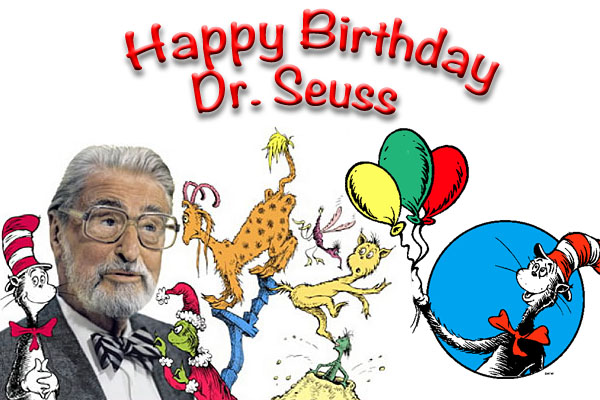DR. SEUSS
Dr. Seuss Celebration
Theodor Seuss Geisel was born on March 2, 1904, in Springfield, Massachusetts. He published his first children's book, And to Think That I Saw It on Mulberry Street, under the name of Dr. Seuss in 1937. Next came a string of best sellers, including The Cat in the Hat and Green Eggs and Ham. His rhymes and characters are beloved by generations.
NEA’s Read Across America Day is a nationwide reading celebration that takes place annually on March 2—Dr. Seuss’s birthday. Across the country, thousands of schools, libraries, and community centers participate by bringing together kids, teens, and books. Celebrate reading!
Visit Seussville webpage: http://www.seussville.com/parents/themes/hats-off-to-dr-seuss-s-birthday
El Día de Lectura A través de América de NEA, es una celebración de lectura a nivel nacional que se celebra anualmente el 2 de marzo: cumpleaños de Dr. Seuss. En todo el país, miles de escuelas, bibliotecas y centros comunitarios participan reuniendo a niños, adolescentes y libros. Vamos a celebrar la lectura con los jóvenes.
Theodor Seuss Geisel nació el 02 de marzo de 1904, en Springfield, Massachusetts. Publicó su primer libro para niños, “Y Pensar Que Lo Vi En Mulberry Street,” bajo el nombre de Dr. Seuss en 1937. Luego vino una serie de “best-sellers,” como, “El Gato en el Sombrero” y “Huevos Verdes y Jamón.” Sus rimas y los personajes son amados por las generaciones.